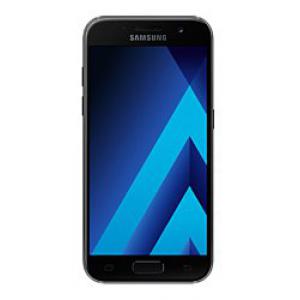Flash firmware on Samsung Galaxy A3 (2017) SM-A320F
Mobiles >> Samsung >> Samsung Galaxy A3 (2017) SM-A320F| Specifications | Reviews | Secret codes |
| Unlock phone | Root phone | Bypass FRP |
| Backup | Flash Firmware | Screenshot |
How to flash Samsung Galaxy A3 (2017) SM-A320F?
Why reinstall the firmware?
Errors constantly appear in the Android OS.
Some applications do not open, reinstalling which does not lead to a positive result.
Some applications from the Play Market do not start.
The phone restarts or shuts down randomly.
The phone began to work slowly.
You are not satisfied with the possibilities of the stock firmware.
Where can I find the firmware?
On the website of your phone manufacturer.
On certain sites where developers post custom or official OS.
What should be done before installing the firmware?
Create a backup copy of user data, contacts and photos and transfer it to your computer.
Insert SD card. An SD card is needed to write firmware to it.
Determine your smartphone model.
Fully charge your device.
Find and download the archive with Firmware. And place it on the SD card.
Installing TWRP Recovery
Download and install the Official TWRP App from the Play Market.
When you start the application for the first time, you must agree to install a new firmware and all the risks associated with this, as well as agree to grant the application Superuser rights and click the 'OK' button.
On the next screen, you need to select the 'TWRP FLASH' item and give the application root-rights.

On the main screen of the application, click 'Select Device', and select your phone model.
After selecting a phone, the application will direct the user to a web page to download the modified recovery environment image file. Download the proposed *.img file.
After downloading the image file, return to the main screen of the Official TWRP App and press the 'Select a file to flash' button. Then we tell the program the path where the file loaded in the previous step is located.
Press the 'FLASH TO RECOVERY' button and confirm your choice, press 'OK'.
When the message 'Flash Completed Succsessfuly!' appears on the screen. Click the 'OK' button. The TWRP installation procedure is now complete.
Transfer the necessary files to the SD card. Using a PC or laptop card reader.
Insert a memory card into your phone.
To reboot into recovery, you need to enter the menu accessible by pressing the button with three stripes in the upper left corner of the main screen of the application. Select 'Reboot' and then click on the 'REBOOT RECOVERY' button.
Firmware via TWRP

Before flashing, you need to delete all user data from the phone, this will avoid many problems. press 'WIPE' on the home screen.
You can start flashing. Click the 'Install' button.

The file selection screen is displayed. At the very top is the 'Storage' button, which allows you to switch between types of memory.
Select the location where you copied the files. Press the OK button.

Find the file we need and click on it. A screen opens with a warning about possible negative consequences, you need to check the item 'Zip signature verification', which will avoid using corrupted files when writing to the phone's memory sections.
The procedure for flashing the phone will begin, accompanied by the appearance of inscriptions in the log field and the movement of the progress bar.
After the firmware installation procedure is completed, the 'Successful' message appears on the screen.
Summary: Type: smartphone; Band: LTE, 3G (UMTS), GSM 900, GSM 1800, GSM 1900; Platform: Android; Operating system: Android 6.0; Processor: Samsung Exynos 7870; Number of processor cores: 8; CPU frequency: 1 600 MHz; Graphics processor: Mali-T830; RAM: 2 048 MB; Extendable Memory: 16 GB; Memory card slot: yes; Type of memory card: microSD (TransFlash), micro SDHC, micro SDXC; Combined SIM card slot and memory card slot: yes; SAR value: 0.35 W/kg; Dimensions (H/L/W): 135.4x66.2x7.9 mm; Weight: 138 g; Housing material: Metal and glass; The number of SIM-cards: 2; Type of SIM card: nano SIM; Fingerprint ID: yes; Water protection: yes; Color screen: yes; Curved screen: no; Screen Ty ...
Comments, questions and answers on the flash firmware Samsung Galaxy A3 (2017) SM-A320F
Ask a question about Samsung Galaxy A3 (2017) SM-A320F




